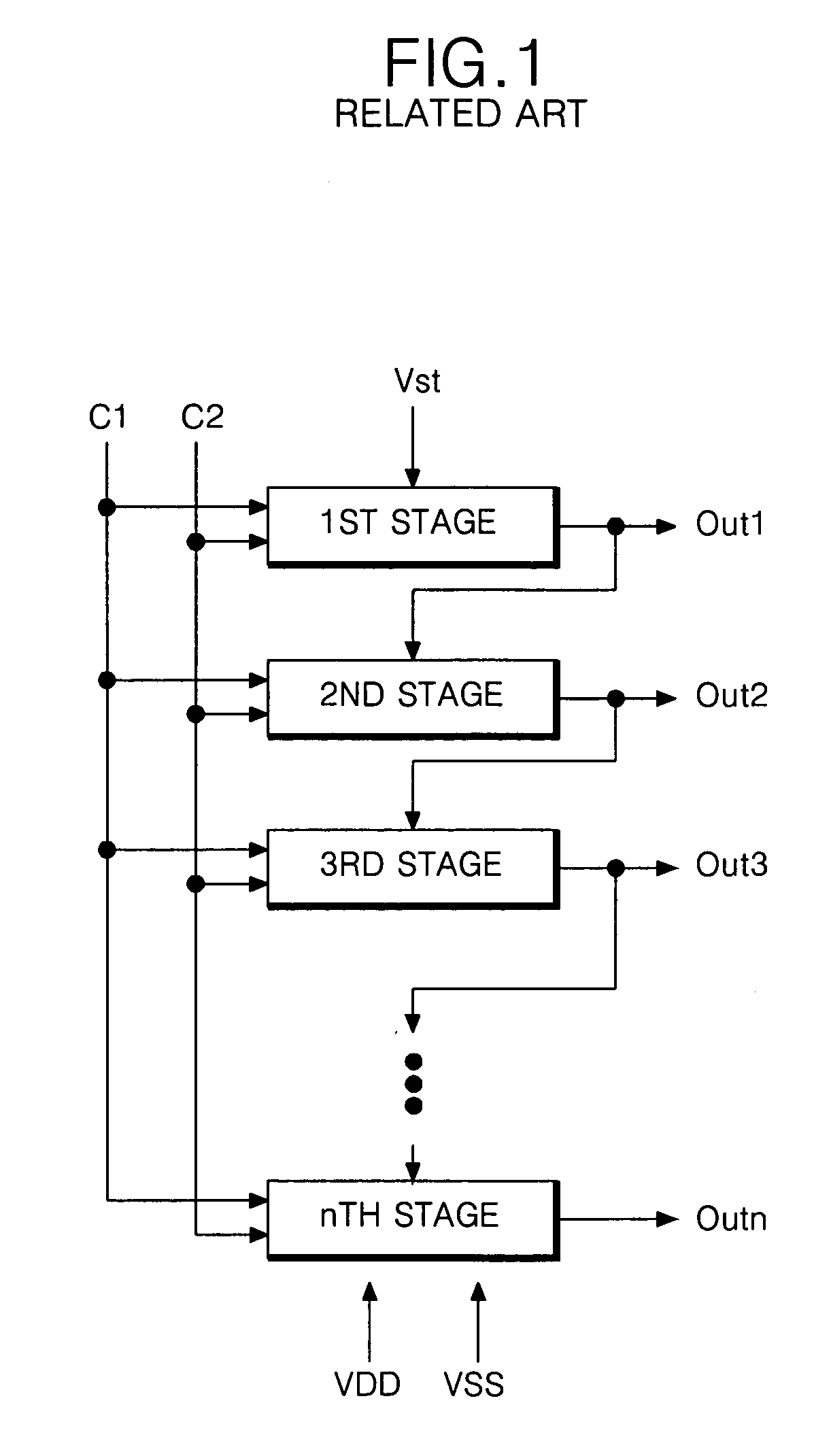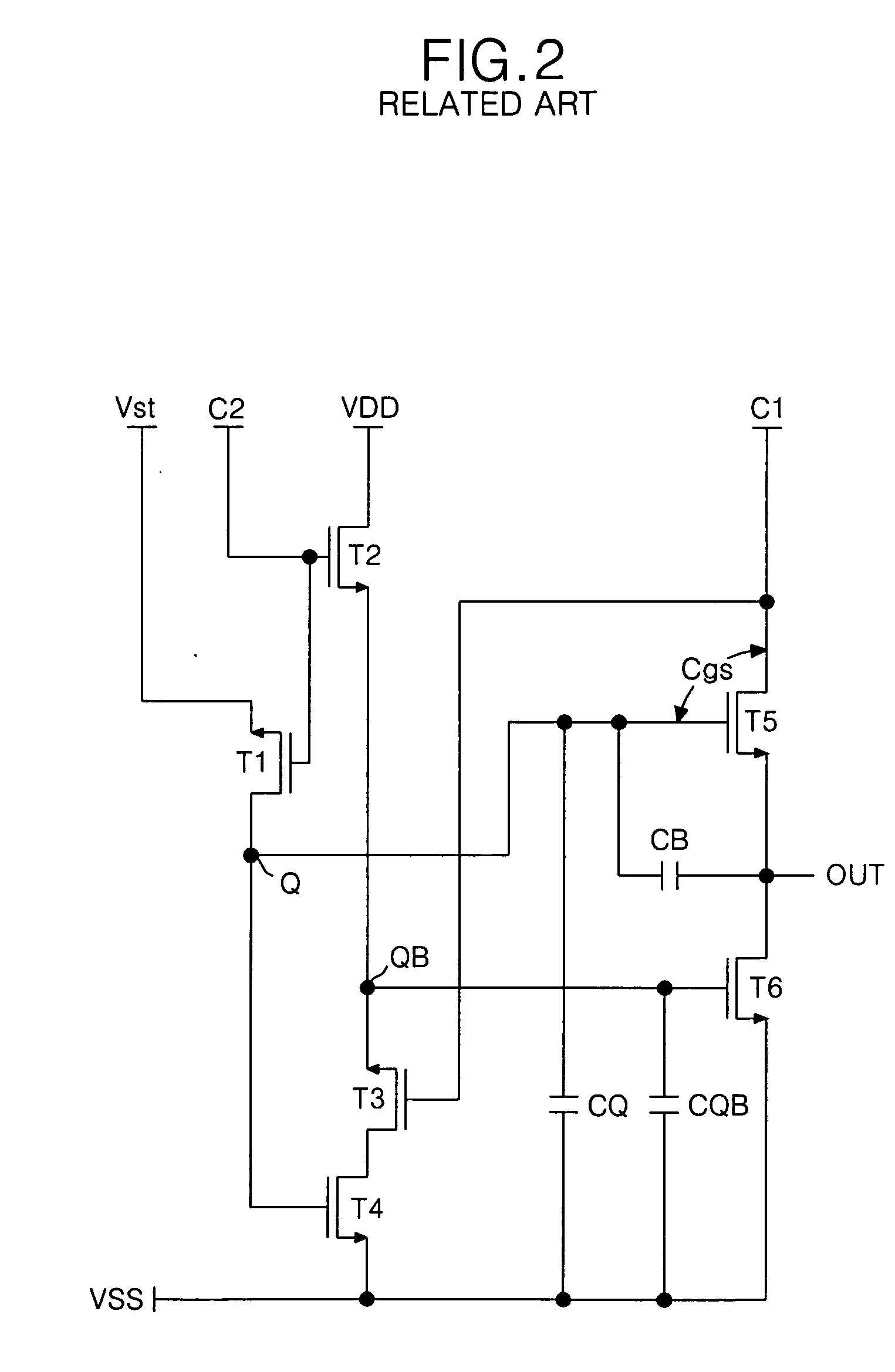Shift register
a technology of shift register and shift register, which is applied in the direction of static storage, digital storage, instruments, etc., can solve the problems of tb>6/b> being erroneously operated, the bias temperature stress characteristic of the transistor,
- Summary
- Abstract
- Description
- Claims
- Application Information
AI Technical Summary
Benefits of technology
Problems solved by technology
Method used
Image
Examples
first embodiment
[0052]FIG. 4 is a detailed circuit diagram of one stage in a shift register according to the present invention, and FIG. 5 shows driving waveforms thereof.
[0053] Referring to FIG. 4, the stage of the shift register includes an output buffer having a ninth NMOS transistor T9 for outputting a first clock signal C1 to an output line under control of a Q node and a tenth NMOS transistor T10 for outputting a low-level driving voltage VSS to the output line under control of a QB node, a pre-charger having a first NMOS transistor T1 for pre-charging the Q node, a first controller having second to seventh NMOS transistors T2 to T7 for controlling the QB node, and a second controller having eighth and eleventh NMOS transistors T8 and T11 for controlling the Q node.
[0054] The ninth NMOS transistor T9 of the output buffer is connected between the input line of the first clock signal C1 and the output line of the stage to be controlled by the Q node, and the tenth NMOS transistor T10 is connec...
second embodiment
[0065] In order to solve the above-mentioned problem, a shift register according to the present invention will be described below.
[0066]FIG. 6 is a detailed circuit diagram of one stage in a shift register according to a second embodiment of the present invention, and FIG. 7 is a driving waveform diagram of the stage shown in FIG. 6.
[0067] Referring to FIG. 6, the shift register includes an output buffer having a fifth NMOS transistor T5 for outputting a clock signal C1 to an output line under control of a Q node and sixth and seventh NMOS transistors T6 and T7 for outputting a low-level driving voltage VSS to the output line under control of QB1 and QB2 nodes, a Q node controller having first and second NMOS transistors T1 and T2 and twelfth and thirteenth NMOS transistors T12 and T13 for controlling the Q node, a QB node controller having third and fourth NMOS transistors T3 and T4 for controlling a QB node, a QB1 node controller having eighth and ninth NNOS transistors T8 and T9...
PUM
 Login to View More
Login to View More Abstract
Description
Claims
Application Information
 Login to View More
Login to View More - R&D
- Intellectual Property
- Life Sciences
- Materials
- Tech Scout
- Unparalleled Data Quality
- Higher Quality Content
- 60% Fewer Hallucinations
Browse by: Latest US Patents, China's latest patents, Technical Efficacy Thesaurus, Application Domain, Technology Topic, Popular Technical Reports.
© 2025 PatSnap. All rights reserved.Legal|Privacy policy|Modern Slavery Act Transparency Statement|Sitemap|About US| Contact US: help@patsnap.com



